-


The Lay
of the
LandInterview with landscape architect Kate Cullity
By Leigh Theodore Vlassis
-


In our search to discover whether there is really such a thing as “Australian-ness” – and whether it comes from the land itself – uncube spoke to leading landscape architect and environmental artist Kate Cullity from TCL (Taylor Cullity Lethlean) about working with the Australian landscape and the relationships between culture and climate.
Previous page: The Australian Garden by TCL in Cranbourne, Victoria, including Mark Stoner and Edwina Kearney’s sculpture: “Ephemeral Lake”. (Photo: Peter Hyatt; all photos courtesy TCL)
-
How would you define landscape architecture in Australia and its influences?
Although people have been practising the art of landscape design for millennia, landscape architecture is a relatively new field throughout the world. In Australia, as the practice of landscape architecture is a western construct we often look towards Europe and America. In a sense, the tyranny of distance means that we mould ideas taken from there and make them our own. We can be quite maverick about art and design; although we like to look towards other societies we don’t always follow their rules – Australian design can be quite irreverent and inventive. There is a vast amount of land in Australia and, unlike Europe, Australia has not all been filled in, so this condition demands that we work in a slightly different way.
Another factor is the paradox of the time frame. Non-Aboriginal Australians have one of the youngest Western cultures in the world. Old in non-Aboriginal Australia is only about 200 hundred years – which is not at all old in Europe. With this in mind, the Aborigines have one of the oldest, if not the oldest, known living indigenous cultures in the world. So we live in this incredible paradox between old and new.The Scribbly Gum boardwalk connects two separate stages of the Australian Garden. (Photo: John Gollings)
-
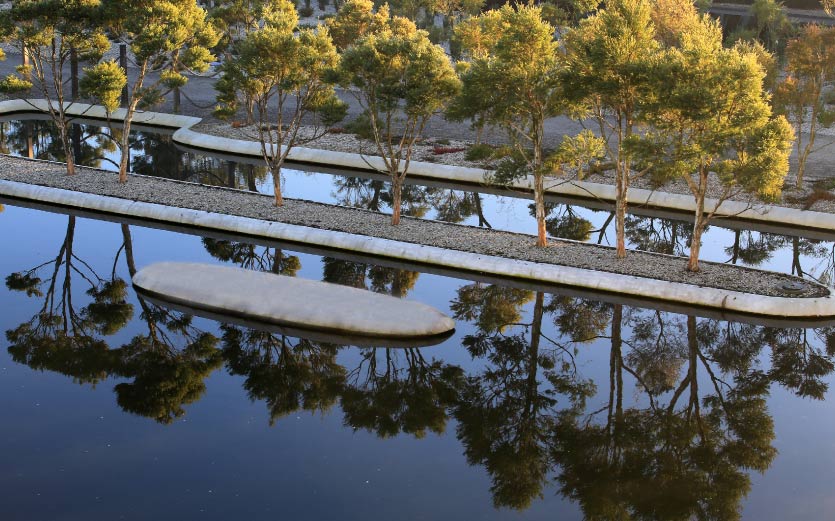
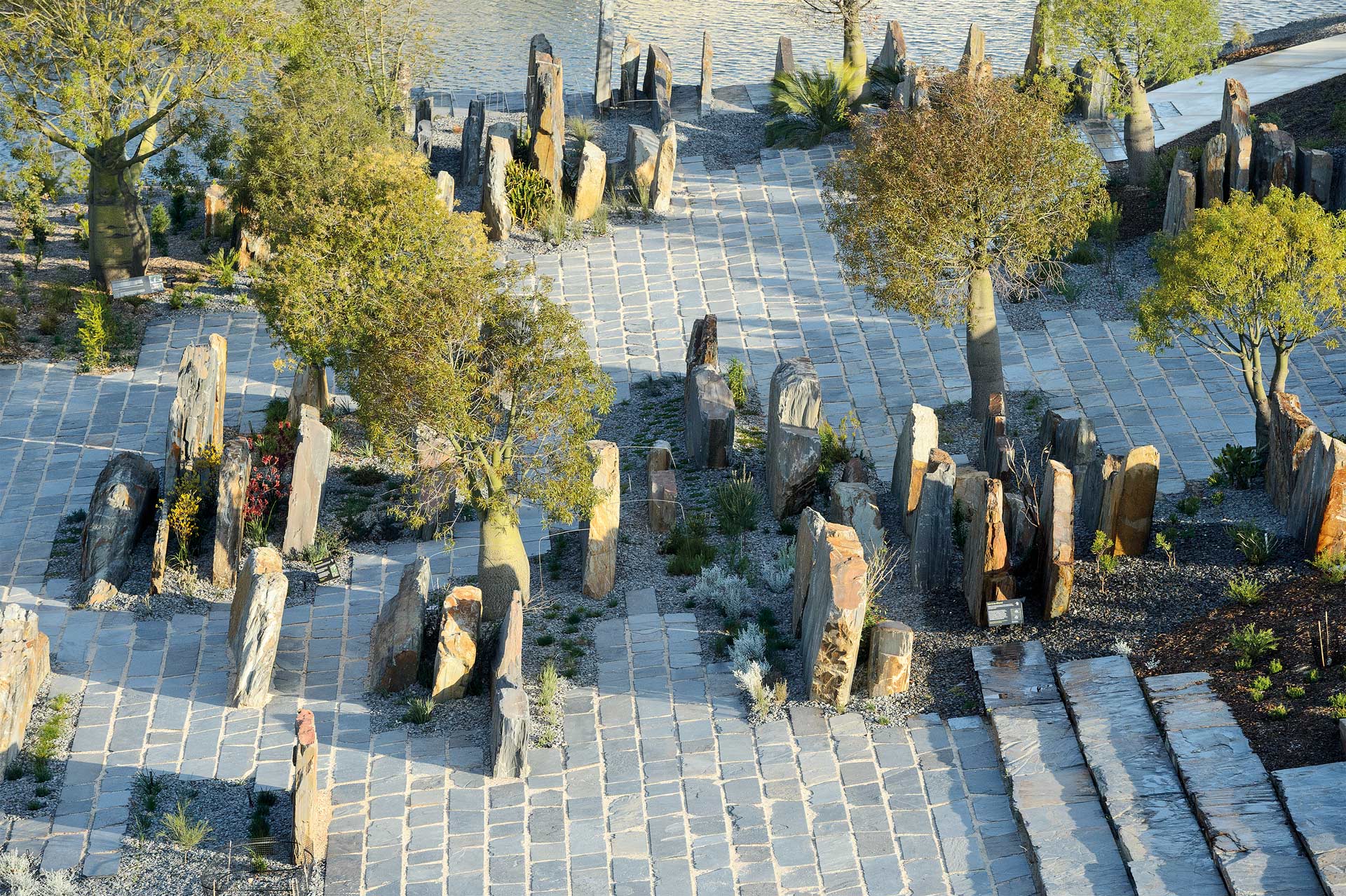
And the landscape?
In geological terms Europe is relatively new, whereas Australia has some of the oldest geologies in the world, so our soils are some of the most depleted. One of the reasons that there is less mountainous terrain in Australia is that our landscape is so old: it has been eroded and worn away.
In terms of your own practice, what are the key factors you always consider when developing a design?
These basic factors are something that the practice’s founders, Perry Lethlean and Kevin Taylor (my late husband) and I, explored in depth when we were all doing our PhDs. We were thinking about the threads that drive our practice. We came up with a number of them: our relationship to site, the materials we use, the narrative of the stories and ideas behind each project, the civic nature of our work in cities and urban areas, and how we work with other professionals and collaborators. One factor that we all focused on was the Australian condition, or “Australian-ness”.
Top: The Melaleuca trees will ultimately be pruned as a linear sculpted form. (Photo: Peter Hyatt); Bottom: The Australian flora rock garden. (Photo: John Gollings)
-
We ended up removing this thread, because we found that it was the conditions of site, narrative, materiality, civicness and collaboration that actually formed the way that we worked, rather than the “Australian-ness” of what we do. As I explained before, Australia looks towards Europe and America, but I think that when we tease that out, it is those remaining factors that define our work.
TCL’s design for the Australian Garden in Cranbourne, Victoria, won World Landscape of the Year 2013. Was it designed to portray a specifically Australian identity?
The Australian Garden was an incredible gift for us. We really wanted that project and felt it resonated well with TCL. The way that we approached the job came from the very inspiring brief: to express the Australian flora and the Australian relationship to landscape in an artistic and sculptural manner. What we were essentially inspired to do was to abstract the qualities of the landscape, just as Australian contemporary artists had done and continue to do, and distill the essence of what makes the landscapes here so particular. We were interested in telling stories about the Australian landscape in an immersive rather than sign-based or didactic way.
The Lilypad bridge. (Photo: John Gollings)
-
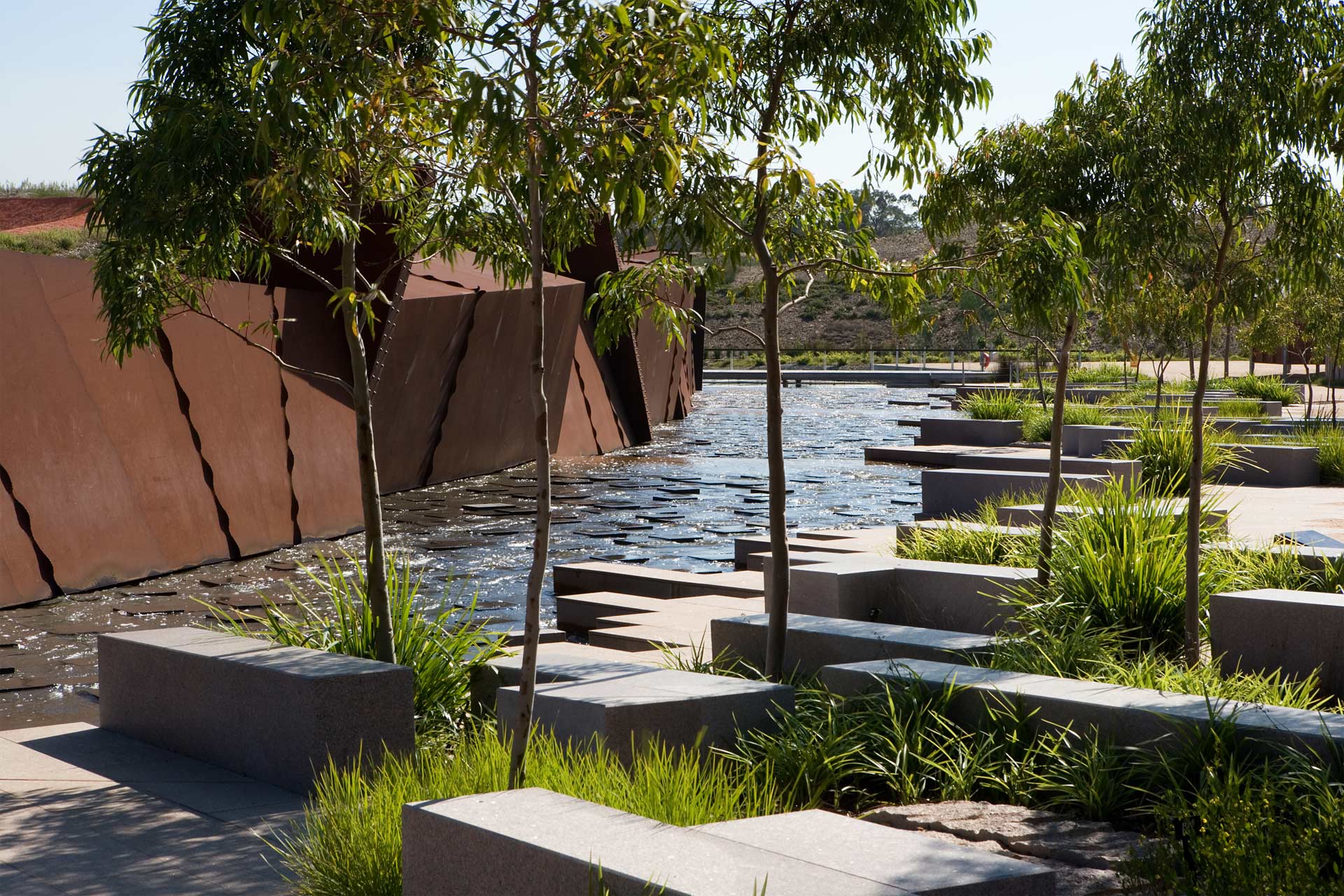
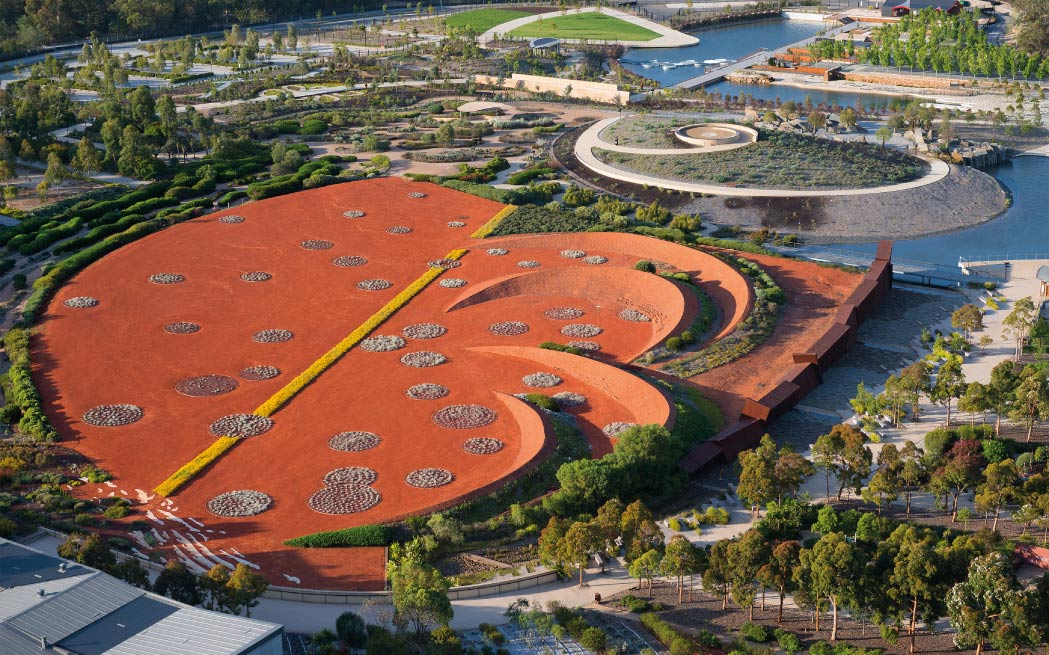
What does it tell the visitor about the landscape and the ecosystems represented?
In the first garden, the Sand Garden, for example, we wanted to express the sublime and surreal qualities of the dry, desert areas of Australia – characteristics such as a sense of spaciousness and minimalism. An often misunderstood notion is that these vast landscapes are robust, but in fact they are quite fragile and made from incredibly impoverished soils. We wanted the visitors to have a sense of reverence as in a Japanese garden, and to encourage that sensibility, we composed a viewing garden rather than a garden for walking, a garden people are not allowed to enter.
The defining narrative in the Australian Garden is the journey of water. It’s either the abundance or the absence of water that defines the Australian landscape. The first section of the garden, completed in 2006, tells stories about dry desert landscapes and the scarcity, preciousness and ephemeral quality of water. The more recently completed section, finished in 2012, is about the immersive and urbane landscapes of the continental edge, the coast, estuaries and rivers. Here the garden is informed by the presence of water rather than its absence.
Top: The Rockpool Waterway. (Photo: Ben Wrigley); Bottom: The Sand Garden at the centre of the Australian Garden. (Photo: John Gollings)
-
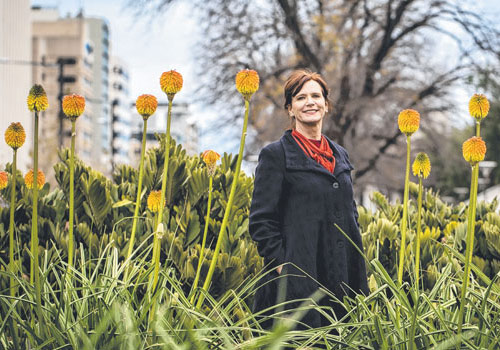
Kate Cullity is a noted landscape architect particularly skilled in the integration of public art with landscape and urban design. From 1986 onwards she has worked on a wide range of landscape projects varying from small-scale courtyard designs to large-scale masterplans. She founded the landscape architecture and urban design firm Taylor Cullity Lethlean (TCL) in 1989 with her late husband Kevin Taylor, with Perry Lethlean joining the practice in 1995.
Kate also works as an artist and has been commissioned by agencies such as the City of Melbourne, Melbourne International Festival, The McClelland Survey, the National Museum of Australia and International Garden Festivals in France and Canada.
tcl.net.au
How does one intervene and design landscapes in the remote, sensitive, regions of Australia, like the design you made for the Uluru Kata Tjuta Cultural Centre, where the harsh environment is so closely part of Indigenous culture and life?
In such a remote area, it really was about discovering the landscape and culture as we found them. It was based on an appreciation of a landscape that is magnificent at every scale and about a reverence for the living Aboriginal culture found at Uluru. The indigenous people are known as Anangu and are the custodians and owners of the land. They are the hosts while the tourists are the guests.
When visitors come to Uluru they think they are just going to be looking and experiencing an enormous iconic rock, but to the Anangu people everything there is precious and to be respected. Before the cultural centre was constructed in 1993, most visitors only drove through the landscape and their experience of the desert was limited to taking photos or climbing the rock, a practice Anangu do not approve of as the rock is sacred and they feel responsible if people injure themselves while climbing.
Rather than tourists getting out of air-conditioned buses or cars and just walking straight into the cultural centre, we sited the bus and the car park 300 metres away, so visitors walk through the desert along sinuous pathways of red sand and actually experience what it is like to be immersed in the desert, to experience the nuances of the flora and fauna. This meandering journey prepares them for the cultural knowledge they will encounter in the cultural centre.What was your brief from the Anangu people?
That the visitor is invited to experience the desert as found at that particular site and on that particular day. The Anangu wanted as little as possible to be altered, added or removed. To this end no trees were removed and there was minimal removal of other vegetation. As many materials as possible from the site were used, including for the pathways, walls and path edging, and no drainage patterns were altered, as even a slight change in gradient can alter the way water is dispersed across the desert landscape. p
Australian Grass Trees. (Photo: John Gollings)
-
Search
-
FIND PRODUCTS
PRODUCT GROUP
- Building Materials
- Building Panels
- Building technology
- Façade
- Fittings
- Heating, Cooling, Ventilation
- Interior
- Roof
- Sanitary facilities
MANUFACTURER
- 3A Composites
- Alape
- Armstrong
- Caparol
- Eternit
- FSB
- Gira
- Hagemeister
- JUNG
- Kaldewei
- Lamberts
- Leicht
- Solarlux
- Steininger Designers
- Stiebel Eltron
- Velux
- Warema
- Wilkhahn
-
Follow Us
Tumblr
New and existing Tumblr users can connect with uncube and share our visual diary.
»Less is a bore.«
Robert Venturi
Keyboard Shortcuts
- Supermenu
- Skip Articles
- Turn Pages
- Contents


